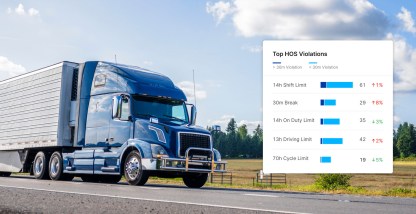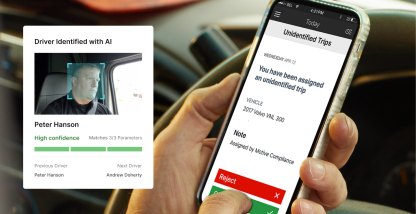Thousands of DOT inspections are performed every month, yet many drivers (and officers) are unfamiliar with the legal responsibilities and requirements of Hours Of Service record keeping. In this post, we answer the most frequently asked HOS-related questions the Motive Support team receives so you can avoid violations and ensure that your driver logbooks are kept to DOT standards.
1. DVIRs — Do you need to fill out an inspection report everyday?
For property-carrying vehicles, a formal Driver Vehicle Inspection Report is only required when a defect is discovered by the driver. If a defect is found, the driver must fill out a report, sign it, and have a mechanic sign-off on the report once the repair is made. For passenger-carrying vehicles, a formal DVIR is required regardless of whether a defect is found.
2. How many days of logs do you need to show if an officer pulls you over?
In the U.S. you are required to carry eight days of logs — the past seven days plus the current day. In Canada, you are required to carry 14 days of logs — the past 13 days plus the current day.
3. Are you legally required to keep a printer in-cab if you log your HOS electronically?
Most officers are okay viewing logs directly from a driver’s mobile device or having them emailed or faxed to them. That said, an officer can request a hard copy at the time of an inspection. The driver does not have to have his or her logs printed in advance, but some fleets recommend that drivers keep a printer in-cab in case a DOT officer requests a hard copy.
4. What is the difference between an electronic logbook app and an ELD?
An electronic logbook app is simply an electronic version of a paper driver logbook — a driver still records his or her duty status and other FMCSA required log information. ELDs are hardware devices that sync with a vehicle’s engine to automatically record and track a driver’s hours of service, which will be required according to the December 2017 ELD Mandate.
5. What is a cab card and do I need to have one?
A cab card is an instruction sheet describing how to store and retrieve ELD data. Only drivers using ELDs, AOBRDs, or EOBRs to record their hours of service are required to keep these printed instructions in-cab. Drivers using an electronic logging app, which is different from an on-board recording device, are not required to keep a cab-card in the vehicle.
6. What timezone are you supposed to log your hours of service in if you cross a border?
Drivers are required to log HOS according to the time zone of their home terminal, regardless of where they travel. Unless a driver’s home-terminal changes, there is no need to change time zone when logging hours.
7. When crossing borders, are you expected to follow the HOS rules of that region or the HOS rules of your home base?
According to the FMCSA, drivers operating outside of their state borders must comply with the HOS rules of that region. A U.S. driver operating in Canada must comply with the national, provincial, and territorial requirements of Canada, just as Canadian drivers must comply with U.S. rules and regulations while operating in the United States.
To learn more about HOS rules and tips on how to stay DOT compliant, check out our HOS rules cheat sheet.








